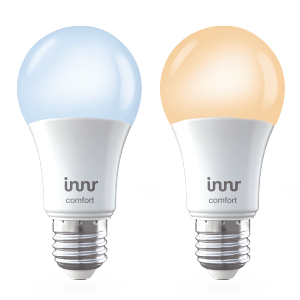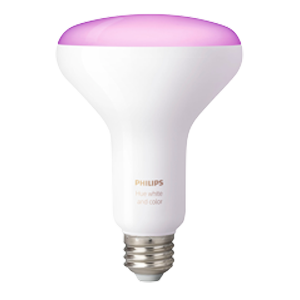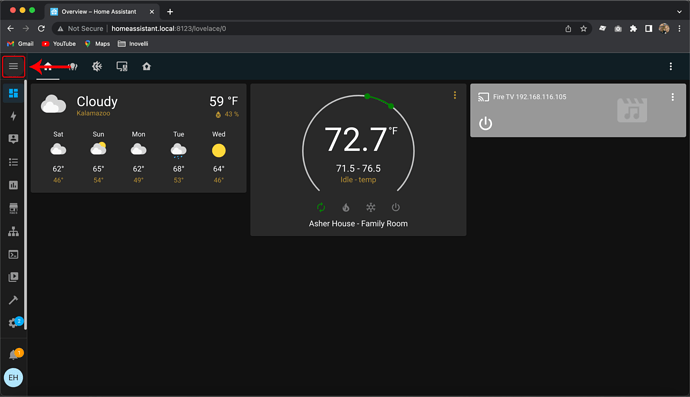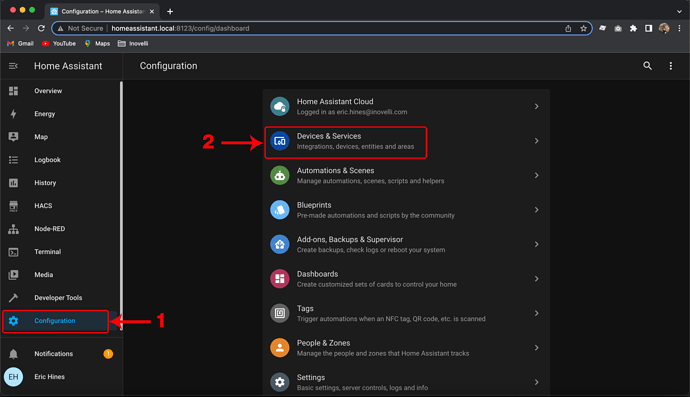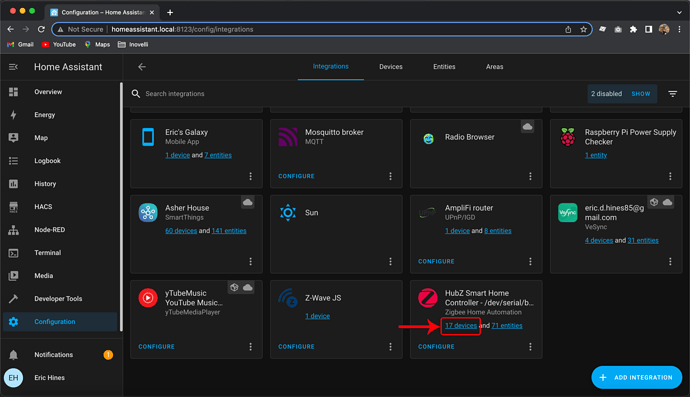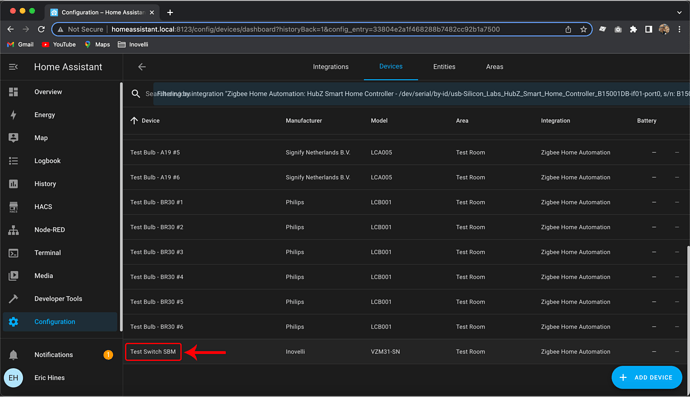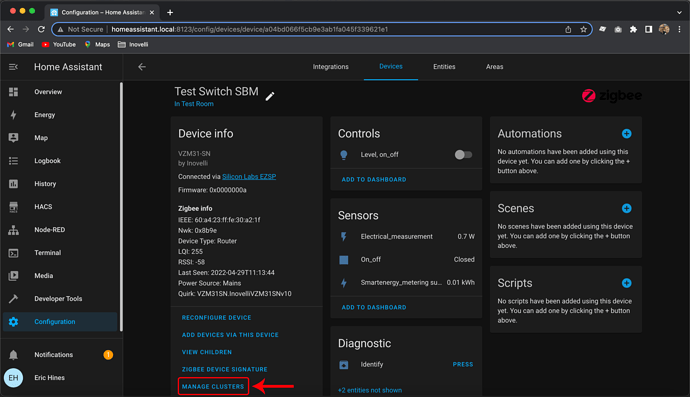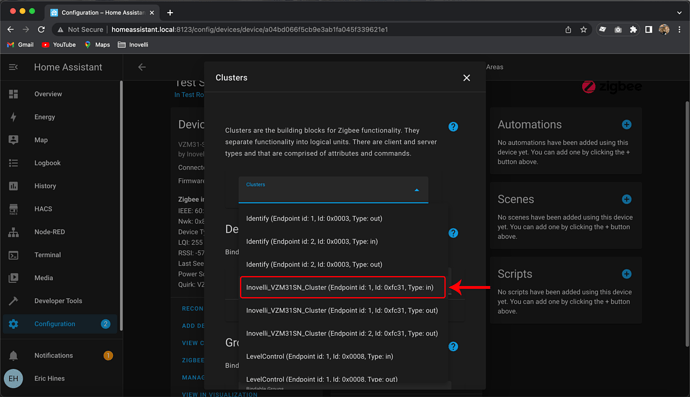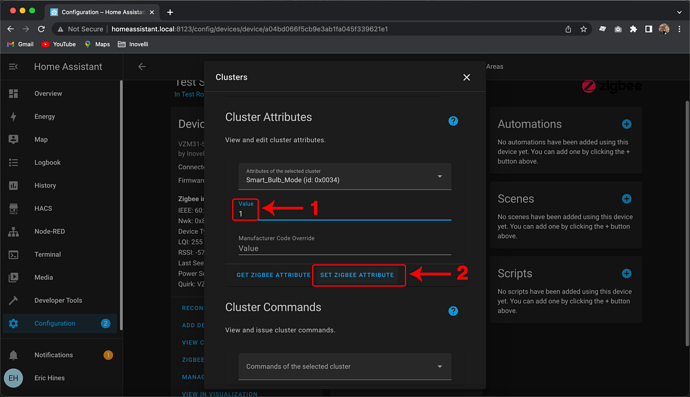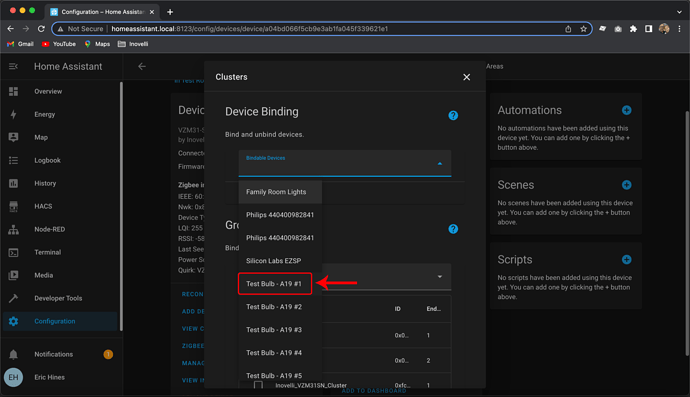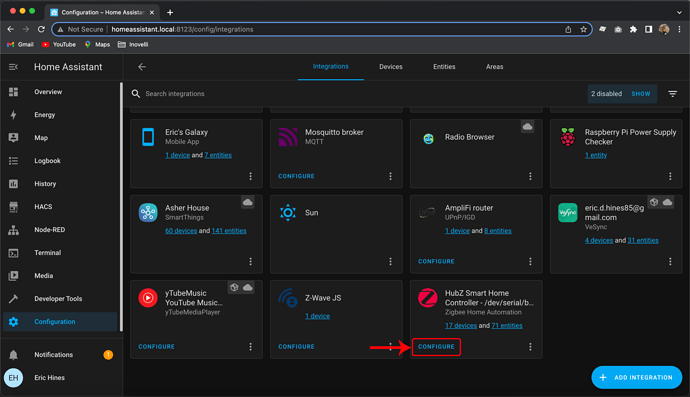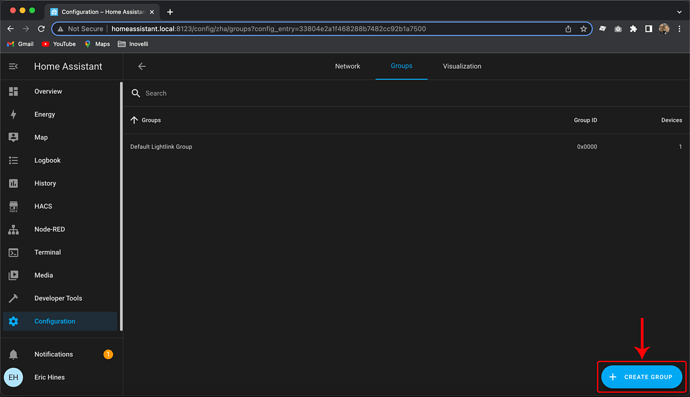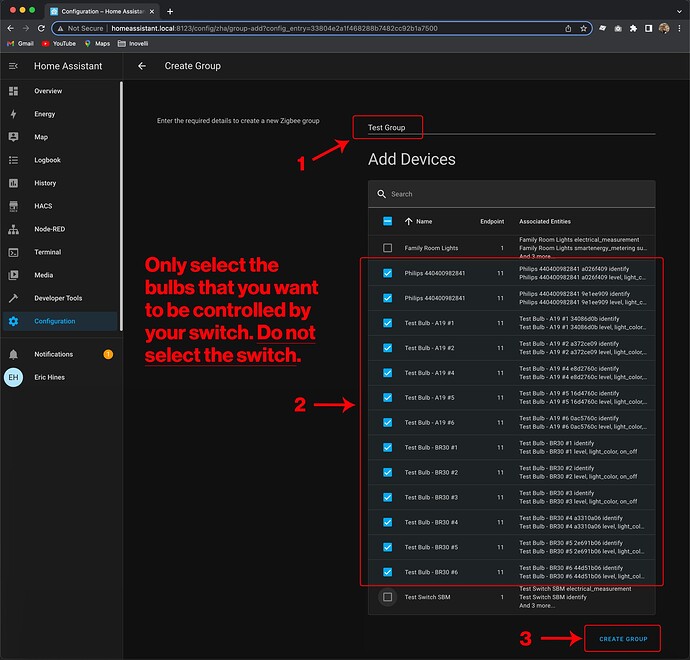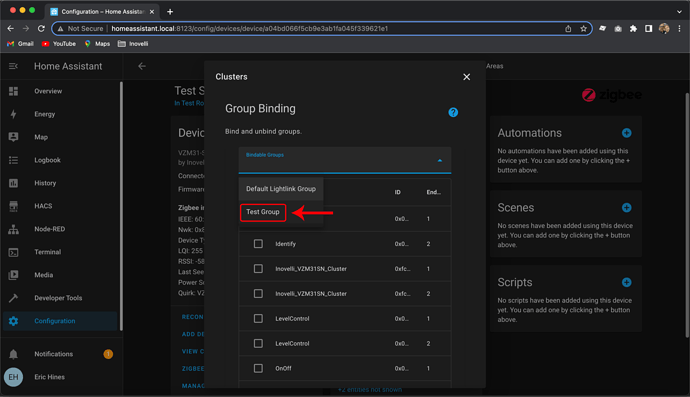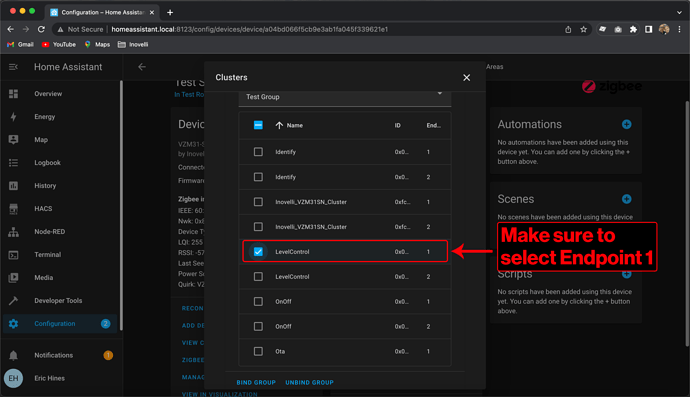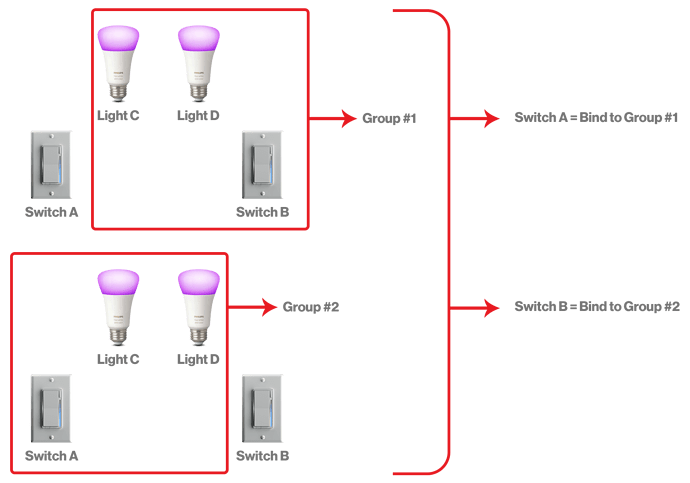DISCLAIMER
While we (and our community) try to keep these instructions up to date, it’s often hard due to the many updates to our firmware, Home Assistant app & platform changes, as well as many other factors outside of our control. If any updates/edits need to be made to these instructions, please comment on this thread so we can keep it up-to-date:Wiki - General Feedback/Suggestions Thread
COMMUNITY DRIVEN
Our entire Knowledge Base (which includes manuals) is community driven. This means that we at Inovelli work together with our amazing community to keep articles up-to-date. We’d love it if you’d contribute in any way you can, be it making edits, submitting how-to’s so others can learn, participating in our innovation projects, or simply commenting on threads. Thank you so much for your support and dedication to really making an impact in the smart home market.Community Knowledge Base
NOTE: All of the pictures can be clicked on to be made larger. Also, if you’re on mobile, you can either click on the pictures or turn your phone side-ways and the pictures will become larger.
Zigbee Binding Overview
Zigbee binding is when two or more Zigbee products communicate directly with one another without the need to communicate with a hub. There are two main benefits of utilizing Zigbee binding: speed & local control.
From a speed standpoint, cutting out the middle-man (hub) can save precious milliseconds or even seconds depending on your cloud and/or processing power off your hub. Whereas from a local control standpoint, if your hub goes does down and cannot communicate, your products can still talk to each other.
Below is a quick video that shows the speed of Zigbee Bindings:
For an official explanation, please see this link: Zigbee Bindings
Navigating these Instructions
For desktop users, the, “Table of Contents” is located to the right of the screen, whereas for mobile users, it can be found at the bottom of the screen.
NOTE: If you do not see the table of contents, click here: How To's | Setup Zigbee Binding - Home Assistant (ZHA)
Please click on any of the sections to get started. We recommend working your way down as it follows an intentional flow that is user friendly and hub/gateway specific.
Prerequisites
There is only one prerequisite to setting up Zigbee bindings with your Inovelli Switch in ZHA and it is:
- Ensure what you’re binding to your switch is Zigbee and supports Zigbee binding
Compatible Products
We’ve tested Zigbee binding with the following Zigbee products on our switches:
DISCLAIMER: As an Amazon Associate Inovelli, LLC earns from qualifying purchases.
Setup Instructions
Below we will walk through a few different scenarios where you’d want to use Zigbee binding: Switch to Bulb, Switch to Switch and Switch to Switch & Bulb.
Switch to Bulb(s)
In this scenario, you will be binding your Inovelli switch to Zigbee bulb(s). Please click on the drop-downs to select the option that best suits your setup.
Smart Bulb(s) Wired to Smart Switch
Please select from the following drop-downs based on the number of smart bulbs you have:
Smart Switch to 1x Smart Bulb
In this example, we will use the combination of Smart Bulb Mode (to keep full power to your smart bulbs) plus Zigbee Binding.
Feel free to follow the written instructions below by clicking the drop down or follow along with the video below:
Written Instructions
- Open your Home Assistant App (web or mobile) and click on the hamburger menu at the top left—
- In the hamburger menu, click on, “Configuration” and select, “Devices & Services”—
- Find your ZHA instance and click on the devices URL (ie: 2 devices, 3 devices, etc)—
- Click on your light switch and select, “Manage Clusters”—
- Now we will put your switch in, “Smart Bulb Mode” to maintain power to your bulbs. To do this, click on the, “Clusters” dropdown and select, “Inovelli_VZM31SN_Cluster (Endpoint id: 1, Id: 0xfc31, Type: in)”—
- Next, under, “Cluster Attributes” select, “Smart Bulb Mode” and then in the, “Value” box input the number 1 and click, “Set Zigbee Attribute”—
- Under, “Binding” select the light bulb you would like your switch bound to and click, “Bind”—
- Test your binding by turning on/off and dimming your switch – what should happen is that whenever you turn your switch on locally (at the switch) or remotely, the bulb you selected should also turn on/off and dim.
NOTE: The above video does not include putting the switch in, “Smart Bulb Mode” which is necessary if your bulbs are wired to the switch. Please follow Steps 2-6 in the written instructions above.
Smart Switch to Multiple Smart Bulbs
In this example, we will use the combination of Smart Bulb Mode (to keep full power to your smart bulbs) plus Zigbee Group Binding.
Feel free to follow the written instructions below by clicking the drop down or follow along with the video below:
Written Instructions
- Open your Home Assistant App (web or mobile) and click on the hamburger menu at the top left—
- Click on, “Configuration” and then, “Devices & Services”—
- Find your ZHA instance and click, “Configure”—
- Click on the, “Groups” tab and then, “Create Group” at the bottom—
- Give your group a name (in this case we named it, “Test Group”) and then under the, “Add Devices” section, add the smart bulbs you want in your group – then click, “Create Group”—
- In the hamburger menu, click on, “Configuration” again and select, “Devices & Services”—
- Find your ZHA instance and click on the devices URL (ie: 2 devices, 3 devices, etc)—
- Click on your light switch and select, “Manage Clusters”—
- Now we will put your switch in, “Smart Bulb Mode” to maintain power to your bulbs. To do this, click on the, “Clusters” dropdown and select, “Inovelli_VZM31SN_Cluster (Endpoint id: 1, Id: 0xfc31, Type: in)”—
- Next, under, “Cluster Attributes” select, “Smart Bulb Mode” and then in the, “Value” box input the number 1 and click, “Set Zigbee Attribute”—
- Under, “Group Binding” select whatever you named your group (we named it, “Test Group” in Step 5)—
- Click on the checkbox that corresponds to, “LevelControl” and, “Endpoint #1” and click, “Bind Group”—
- Test your binding by turning on/off and dimming your switch – what should happen is that whenever you turn your switch on locally (at the switch) or remotely, the bulb(s) you selected should also turn on/off and dim.
NOTE: The above video does not include putting the switch in, “Smart Bulb Mode” which is necessary if your bulbs are wired to the switch. Please follow Steps 6-10 in the written instructions above.
Smart Bulb(s) NOT Wired to Smart Switch
Please select from the following drop-downs based on the number of smart bulbs you have:
Smart Switch to 1x Smart Bulb
NOTE: If your smart bulb is wired directly to your smart switch, please follow the instructions in the above section titled, “Smart Bulb Wired to Smart Switch” as you will need to utilize, “Smart Bulb Mode”.
Feel free to follow the written instructions below by clicking the drop down or follow along with the video below:
Written Instructions
- Open your Home Assistant App (web or mobile) and click on the hamburger menu at the top left—
- In the hamburger menu, click on, “Configuration” and select, “Devices & Services”—
- Find your ZHA instance and click on the devices URL (ie: 2 devices, 3 devices, etc)—
- Click on your light switch and select, “Manage Clusters”—
- Under, “Binding” select the light bulb you would like your switch bound to and click, “Bind”—
- Test your binding by turning on/off and dimming your switch – what should happen is that whenever you turn your switch on locally (at the switch) or remotely, the bulb you selected should also turn on/off and dim.
Smart Switch to Multiple Smart Bulbs
NOTE: If your smart bulbs are wired directly to your smart switch, please follow the instructions in the above section titled, “Smart Bulb Wired to Smart Switch” as you will need to utilize, “Smart Bulb Mode”.
Feel free to follow the written instructions below by clicking the drop down or follow along with the video below:
Written Instructions
- Open your Home Assistant App (web or mobile) and click on the hamburger menu at the top left—
- Click on, “Configuration” and then, “Devices & Services”—
- Find your ZHA instance and click, “Configure”—
- Click on the, “Groups” tab and then, “Create Group” at the bottom—
- Give your group a name (in this case we named it, “Test Group”) and then under the, “Add Devices” section, add the smart bulbs you want in your group – then click, “Create Group”—
- In the hamburger menu, click on, “Configuration” again and select, “Devices & Services”—
- Find your ZHA instance and click on the devices URL (ie: 2 devices, 3 devices, etc)—
- Click on your light switch and select, “Manage Clusters”—
- Under, “Group Binding” select whatever you named your group (we named it, “Test Group” in Step 5)—
- Click on the checkbox that corresponds to, “LevelControl” and, “Endpoint #1” and click, “Bind Group”—
- Test your binding by turning on/off and dimming your switch – what should happen is that whenever you turn your switch on locally (at the switch) or remotely, the bulb(s) you selected should also turn on/off and dim.
Smart Bulb(s) Wired to Smart Switch + Additional Smart Bulbs on a Separate Circuit
In this example, we will use the combination of Smart Bulb Mode (to keep full power to your smart bulbs) plus Zigbee Group Binding. Basically, you will use Smart Bulb Mode for the bulbs directly wired to your smart switch and then Zigbee Group Binding for all bulbs (directly wired to your switch + the ones not directly wired to your switch).
IMPORTANT: Please ensure the bulb(s) that are not directly wired to your smart switch have a way to maintain power.
Feel free to follow the written instructions below by clicking the drop down or follow along with the video below:
Written Instructions
- Open your Home Assistant App (web or mobile) and click on the hamburger menu at the top left—
- Click on, “Configuration” and then, “Devices & Services”—
- Find your ZHA instance and click, “Configure”—
- Click on the, “Groups” tab and then, “Create Group” at the bottom—
- Give your group a name (in this case we named it, “Test Group”) and then under the, “Add Devices” section, add the smart bulbs you want in your group (both the bulbs directly connected to your switch and the ones not directly connected to your switch) – then click, “Create Group”—
- In the hamburger menu, click on, “Configuration” again and select, “Devices & Services”—
- Find your ZHA instance and click on the devices URL (ie: 2 devices, 3 devices, etc)—
- Click on your light switch and select, “Manage Clusters”—
- Now we will put your switch in, “Smart Bulb Mode” to maintain power to your bulbs directly wired to your switch. To do this, click on the, “Clusters” dropdown and select, “Inovelli_VZM31SN_Cluster (Endpoint id: 1, Id: 0xfc31, Type: in)”—
- Next, under, “Cluster Attributes” select, “Smart Bulb Mode” and then in the, “Value” box input the number 1 and click, “Set Zigbee Attribute”—
- Under, “Group Binding” select whatever you named your group (we named it, “Test Group” in Step 5)—
- Click on the checkbox that corresponds to, “LevelControl” and, “Endpoint #1” and click, “Bind Group”—
- Test your binding by turning on/off and dimming your switch – what should happen is that whenever you turn your switch on locally (at the switch) or remotely, the bulb(s) you selected should also turn on/off and dim.
NOTE: The above video does not include putting the switch in, “Smart Bulb Mode” which is necessary if your bulbs are wired to the switch. Please follow Steps 6-10 in the written instructions above.
Switch to Switch(es)
In this scenario, you will be binding your Inovelli switches together. Please click on the drop-downs to select the option that best suits your setup.
NOTE: Need to update these instructions. It is a copy/paste of the above.
Smart Switch(es) Wired to Smart Switch
Please select from the following drop-downs based on the number of smart bulbs you have:
Smart Switch to 1x Smart Switch
In this example, we will use the combination of Smart Bulb Mode (to keep full power to your smart bulbs) plus Zigbee Binding.
Feel free to follow the written instructions below by clicking the drop down or follow along with the video below:
Written Instructions
- Open your Home Assistant App (web or mobile) and click on the hamburger menu at the top left—
- In the hamburger menu, click on, “Configuration” and select, “Devices & Services”—
- Find your ZHA instance and click on the devices URL (ie: 2 devices, 3 devices, etc)—
- Click on your light switch and select, “Manage Clusters”—
- Now we will put your switch in, “Smart Bulb Mode” to maintain power to your bulbs. To do this, click on the, “Clusters” dropdown and select, “Inovelli_VZM31SN_Cluster (Endpoint id: 1, Id: 0xfc31, Type: in)”—
- Next, under, “Cluster Attributes” select, “Smart Bulb Mode” and then in the, “Value” box input the number 1 and click, “Set Zigbee Attribute”—
- Under, “Binding” select the light bulb you would like your switch bound to and click, “Bind”—
- Test your binding by turning on/off and dimming your switch – what should happen is that whenever you turn your switch on locally (at the switch) or remotely, the bulb you selected should also turn on/off and dim.
NOTE: The above video does not include putting the switch in, “Smart Bulb Mode” which is necessary if your bulbs are wired to the switch. Please follow Steps 2-6 in the written instructions above.
Smart Switch to Multiple Smart Bulbs
In this example, we will use the combination of Smart Bulb Mode (to keep full power to your smart bulbs) plus Zigbee Group Binding.
Feel free to follow the written instructions below by clicking the drop down or follow along with the video below:
Written Instructions
- Open your Home Assistant App (web or mobile) and click on the hamburger menu at the top left—
- Click on, “Configuration” and then, “Devices & Services”—
- Find your ZHA instance and click, “Configure”—
- Click on the, “Groups” tab and then, “Create Group” at the bottom—
- Give your group a name (in this case we named it, “Test Group”) and then under the, “Add Devices” section, add the smart bulbs you want in your group – then click, “Create Group”—
- In the hamburger menu, click on, “Configuration” again and select, “Devices & Services”—
- Find your ZHA instance and click on the devices URL (ie: 2 devices, 3 devices, etc)—
- Click on your light switch and select, “Manage Clusters”—
- Now we will put your switch in, “Smart Bulb Mode” to maintain power to your bulbs. To do this, click on the, “Clusters” dropdown and select, “Inovelli_VZM31SN_Cluster (Endpoint id: 1, Id: 0xfc31, Type: in)”—
- Next, under, “Cluster Attributes” select, “Smart Bulb Mode” and then in the, “Value” box input the number 1 and click, “Set Zigbee Attribute”—
- Under, “Group Binding” select whatever you named your group (we named it, “Test Group” in Step 5)—
- Click on the checkbox that corresponds to, “LevelControl” and, “Endpoint #1” and click, “Bind Group”—
- Test your binding by turning on/off and dimming your switch – what should happen is that whenever you turn your switch on locally (at the switch) or remotely, the bulb(s) you selected should also turn on/off and dim.
NOTE: The above video does not include putting the switch in, “Smart Bulb Mode” which is necessary if your bulbs are wired to the switch. Please follow Steps 6-10 in the written instructions above.
Smart Switch(es) NOT Wired to Smart Switch
Please select from the following drop-downs based on the number of smart bulbs you have:
Smart Switch to 1x Smart Bulb
NOTE: If your smart bulb is wired directly to your smart switch, please follow the instructions in the above section titled, “Smart Bulb Wired to Smart Switch” as you will need to utilize, “Smart Bulb Mode”.
Feel free to follow the written instructions below by clicking the drop down or follow along with the video below:
Written Instructions
- Open your Home Assistant App (web or mobile) and click on the hamburger menu at the top left—
- In the hamburger menu, click on, “Configuration” and select, “Devices & Services”—
- Find your ZHA instance and click on the devices URL (ie: 2 devices, 3 devices, etc)—
- Click on your light switch and select, “Manage Clusters”—
- Under, “Binding” select the light bulb you would like your switch bound to and click, “Bind”—
- Test your binding by turning on/off and dimming your switch – what should happen is that whenever you turn your switch on locally (at the switch) or remotely, the bulb you selected should also turn on/off and dim.
Smart Switch to Multiple Smart Switches
NOTE: If your smart switches are wired directly together, please follow the instructions in the above section titled, “Smart Switch Wired to Smart Switch” as you will need to utilize, “Smart Bulb Mode”.
Feel free to follow the written instructions below by clicking the drop down or follow along with the video below:
Written Instructions
- Open your Home Assistant App (web or mobile) and click on the hamburger menu at the top left—
- Click on, “Configuration” and then, “Devices & Services”—
- Find your ZHA instance and click, “Configure”—
- Click on the, “Groups” tab and then, “Create Group” at the bottom—
- Give your group a name (in this case we named it, “Test Group”) and then under the, “Add Devices” section, add the smart bulbs you want in your group – then click, “Create Group”—
- In the hamburger menu, click on, “Configuration” again and select, “Devices & Services”—
- Find your ZHA instance and click on the devices URL (ie: 2 devices, 3 devices, etc)—
- Click on your light switch and select, “Manage Clusters”—
- Under, “Group Binding” select whatever you named your group (we named it, “Test Group” in Step 5)—
- Click on the checkbox that corresponds to, “LevelControl” and, “Endpoint #1” and click, “Bind Group”—
- Test your binding by turning on/off and dimming your switch – what should happen is that whenever you turn your switch on locally (at the switch) or remotely, the bulb(s) you selected should also turn on/off and dim.
Smart Switch(es) Wired to Smart Switch(es) + Additional Smart Switch(es) on a Separate Circuit
In this example, we will use the combination of Smart Bulb Mode (to keep full power to your smart bulbs) plus Zigbee Group Binding. Basically, you will use Smart Bulb Mode for the bulbs directly wired to your smart switch and then Zigbee Group Binding for all bulbs (directly wired to your switch + the ones not directly wired to your switch).
IMPORTANT: Please ensure the bulb(s) that are not directly wired to your smart switch have a way to maintain power.
Feel free to follow the written instructions below by clicking the drop down or follow along with the video below:
Written Instructions
- Open your Home Assistant App (web or mobile) and click on the hamburger menu at the top left—
- Click on, “Configuration” and then, “Devices & Services”—
- Find your ZHA instance and click, “Configure”—
- Click on the, “Groups” tab and then, “Create Group” at the bottom—
- Give your group a name (in this case we named it, “Test Group”) and then under the, “Add Devices” section, add the smart bulbs you want in your group (both the bulbs directly connected to your switch and the ones not directly connected to your switch) – then click, “Create Group”—
- In the hamburger menu, click on, “Configuration” again and select, “Devices & Services”—
- Find your ZHA instance and click on the devices URL (ie: 2 devices, 3 devices, etc)—
- Click on your light switch and select, “Manage Clusters”—
- Now we will put your switch in, “Smart Bulb Mode” to maintain power to your bulbs directly wired to your switch. To do this, click on the, “Clusters” dropdown and select, “Inovelli_VZM31SN_Cluster (Endpoint id: 1, Id: 0xfc31, Type: in)”—
- Next, under, “Cluster Attributes” select, “Smart Bulb Mode” and then in the, “Value” box input the number 1 and click, “Set Zigbee Attribute”—
- Under, “Group Binding” select whatever you named your group (we named it, “Test Group” in Step 5)—
- Click on the checkbox that corresponds to, “LevelControl” and, “Endpoint #1” and click, “Bind Group”—
- Test your binding by turning on/off and dimming your switch – what should happen is that whenever you turn your switch on locally (at the switch) or remotely, the bulb(s) you selected should also turn on/off and dim.
NOTE: The above video does not include putting the switch in, “Smart Bulb Mode” which is necessary if your bulbs are wired to the switch. Please follow Steps 6-10 in the written instructions above.
Switch to Switch(es) + Bulb(s)
In this scenario, you’re getting crazy. But we love it. You will be binding your Inovelli switches together while also binding to smart bulb(s).
Smart Switches to Smart Bulbs
IMPORTANT: Remember, if you have two smart switches on the same circuit, you will need to make sure you have line power and a neutral to each switch. Please check the Wiring Schematics for more info.
In this example, we will use the combination of Smart Bulb Mode plus Zigbee Group Binding and while we use two smart switches and one smart bulb as an example here, the same logic applies to having multiple switches and bulbs, which is as follows:
- Create as many groups as you have switches. Let’s assume in this example we have: Switch A, Switch B, Light Bulb C and Light Bulb D. So, there will be two groups (bc there are two switches - Switch A and Switch B)
- Group 1 will contain all devices except Switch A (so, Switch B, Light Bulb C and Light Bulb D)
- Group 2 will contain all devices except Switch B (so, Switch A, Light Bulb C and Light Bulb D)
- Lastly, we will put both Switches in Smart Bulb Mode (technically one doesn’t have to be, but it will help with syncing purposes if you put them both in SBM)
Visual Representation
Feel free to follow the written instructions below by clicking the drop down or follow along with the video below:
Written Instructions
- Open your Home Assistant App (web or mobile) and click on the hamburger menu at the top left—
- Click on, “Configuration” and then, “Devices & Services”—
- Find your ZHA instance and click, “Configure”—
- Click on the, “Groups” tab and then, “Create Group” at the bottom—
- Remember, we are going to create two different groups here as shown in the visual above (if you have 3 switches, create 3 groups, 4 = 4 groups, etc). Give your first group a name (in this case we named it, “Group #1”) and then under the, “Add Devices” section, add all the devices except for one of your switches – then click, “Create Group”. Follow the same procedure for your second group (except this time omit the second switch from your group and include the first switch)—
- In the hamburger menu, click on, “Configuration” again and select, “Devices & Services”—
- Find your ZHA instance and click on the devices URL (ie: 2 devices, 3 devices, etc)—
- Click on the first light switch and select, “Manage Clusters”—
- Now we will put your switch in, “Smart Bulb Mode” to maintain power to your bulbs directly wired to your switch. To do this, click on the, “Clusters” dropdown and select, “Inovelli_VZM31SN_Cluster (Endpoint id: 1, Id: 0xfc31, Type: in)”—
- Next, under, “Cluster Attributes” select, “Smart Bulb Mode” and then in the, “Value” box input the number 1 and click, “Set Zigbee Attribute”—
- Under, “Group Binding” select whatever you named your first group (make sure it is the one that does not include the switch we are binding to (Switch A) – again, we named it, “Group #1”—
- Click on the checkbox that corresponds to, “LevelControl” and, “Endpoint #1” and click, “Bind Group”—
- Repeat steps 6-12 but this time setup your second switch bindings.
- Test your binding by turning on/off and dimming your switch – what should happen is that whenever you turn your switch on locally (at the switch) or remotely, the bulb(s) you selected should also turn on/off and dim.
NOTE: The above video does not include putting the switch in, “Smart Bulb Mode” which is necessary if your bulbs are wired to the switch. Please follow Steps 2-6 in the written instructions above.


